Herein we begin a new regular feature, Transit Trivia. We’ll do our best to answer reader’s questions, and with any luck, we’ll all learn something along the way.
Doug Auburg (of Battle Ground, Washington) wants to know what colors the two electric locomotives the North Shore Line purchased from Oregon Electric were painted. Don’s Rail Photosgives their ineage ars follows:
458 was built by the Spokane Portland & Seattle in January 1941 as Oregon Electric Ry. 50. It was purchased by the North Shore in December 1947 and was completed as 458 on January 27, 1948.
459 was built by the SP&S in August 1941 as OERy 51. It was purchased by the North Shore in December 1947 and was completed as 459 on November 22, 1948.
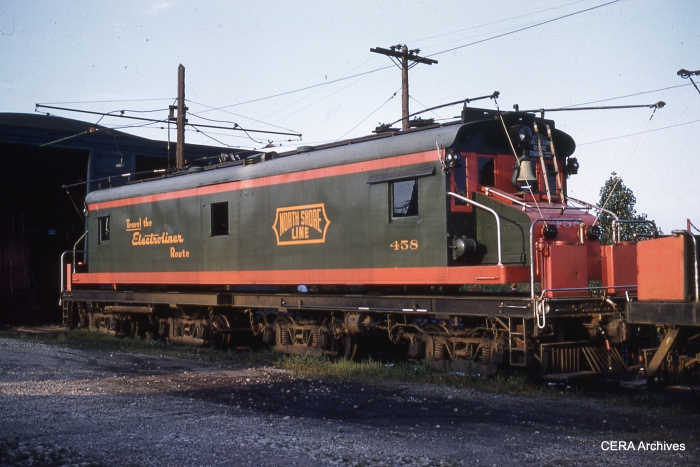
CNS&M freight loco 458 looking pretty good at North Chicago in October, 1961.
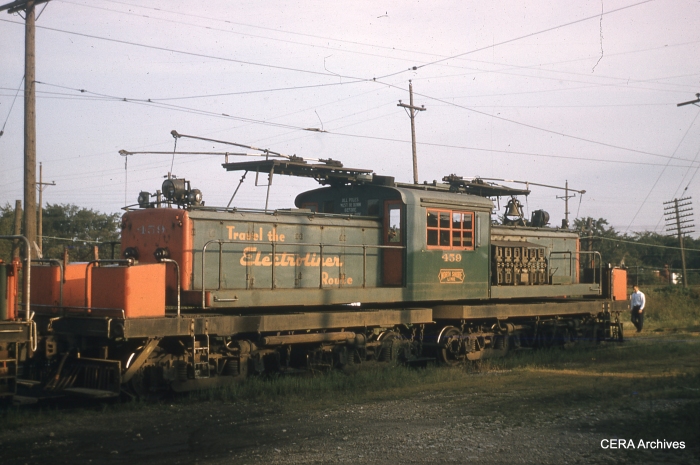
459 in September 1961.
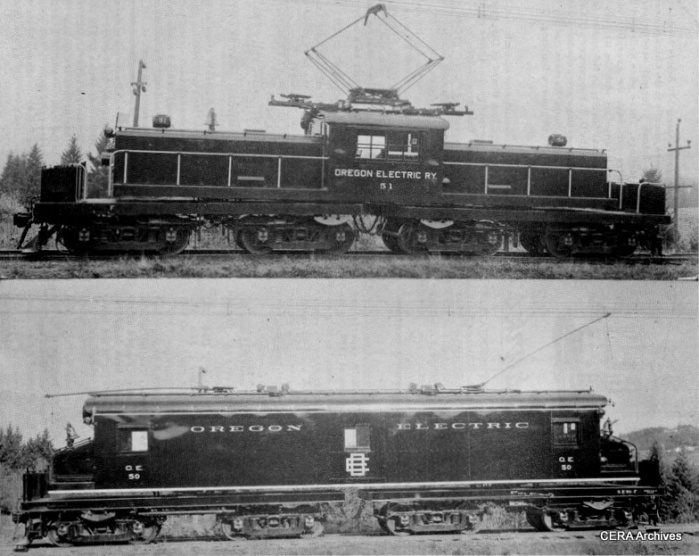
The two freight locos as they looked on the Oregon Electric. (From CERA B-77)
Unfortunately, I haven’t been able to track down any color photos showing the locos on Oregon Electric. According to the Wikipedia, passenger service ended in May 1933, while electric freight operations continued until July 10, 1945, when the railroad dieselized. This gives a period of only about four years when color photos could have been taken, and this coincided with WWII when color film was scarce indeed.
My research shows that OE passenger cars were painted either “traction orange” or “Pullman green,” but this service ended several years before the locos were even built. To the best of my knowledge, the locos may simply have been painted black with either yellow or gold lettering. The photos reproduced in CERA B-77 would tend to support the idea they were black, at least.
Much better color information exists for the locos when they plied the North Shore Line. Here, the colors were the standard dark green with red accents and gold lettering. Unfortunately, both units were scrapped, presumably in 1964, a year after the famous interurban quit. There were no buyers for them.
Trying to paint a model using color photos as a guide will always be a somewhat haphazard affair. Even in the best of situations, colors (and particular shades of colors) may not photograph accurately.
You would think that the digital age has solved all these problems, but not quite. For example, Kodachrome slides, when scanned, often exhibit a “bluecast” that affects overall color. It can take both sophisticated scanners and software to eliminate the bluecast.
The roof of Indiana Railroad car 65, preserved at the Illinois Railway Museum, is supposed to be green, and maybe it is, but in various photos I’ve taken, it appears to be gray. That may just be a “trick of the light.”
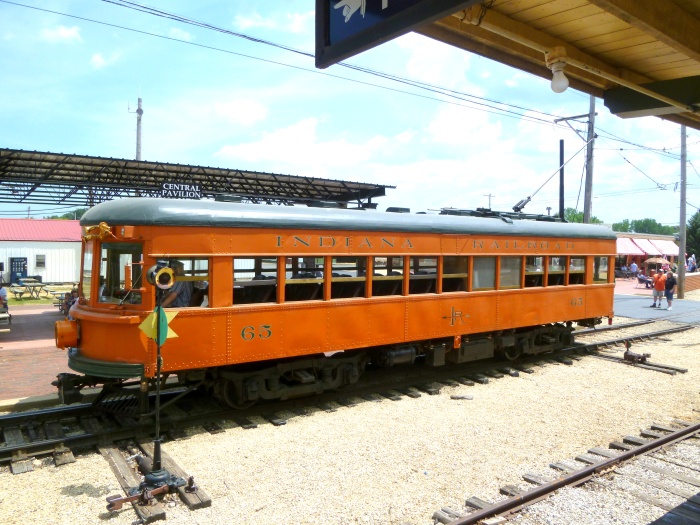
IR #65 in 2012 at the Illinois Railway Museum in Union. (Photo by David Sadowski) Green roof or gray? You be the judge.
There have been at times many heated and passionate discussions at railway museums over the “correct” color some piece of equipment ought to be painted. Sometimes, old-timers have been consulted, and asked about the proper color. In one case I heard about, they said they bought whatever the paint store had on sale. So, even in the old days, there were color variations, even on properties that were trying to maintain a particular paint scheme.
The paints we use today may be different in composition than what was available decades ago. It may not be possible, in all cases, to have an exact match for the original colors. San Francisco has learned this as they try to reproduce the colors of various PCC cars representing various cities.
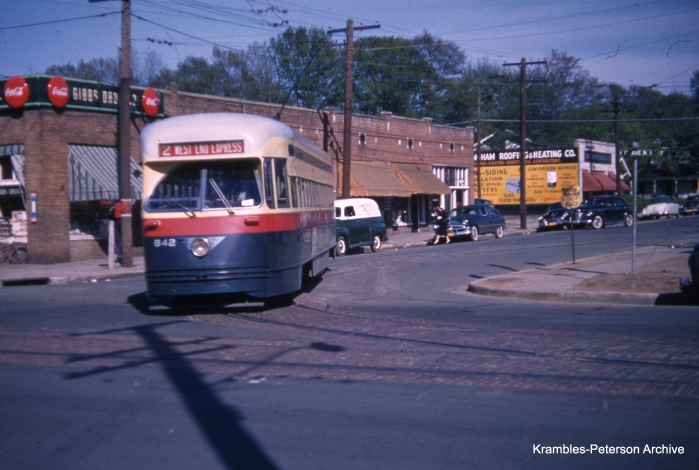
Birmingham (AL) Electric PCC 842 circa 1950. This car’s attractive color scheme has been reproduced in San Francisco on Muni car 1077. You can see how that car looks here:
http://commons.wikimedia.org/wiki/File:San_Francisco_PCC_streetcar_1077,_Birmingham_livery.jpg
There are many things that affect the colors on a railcar, even after the paint drys. After the end of service, the Chicago Aurora and Elgin repainted some of their rolling stock, in hopes that a fresh coat of paint might help sell some equipment. However, they started thinning out the red paint, in order to make it last longer.
As a result, within a few years, some cars that started out red began to look more pink.
Sometimes, transit colors have acquired fanciful names. According to Graham Garfield’s excellent Chicago “L” site, CRT’s 4000-series cars were painted “brindle brown.” When was the last time you looked at something and said, “Hey, that’s brindle brown?”
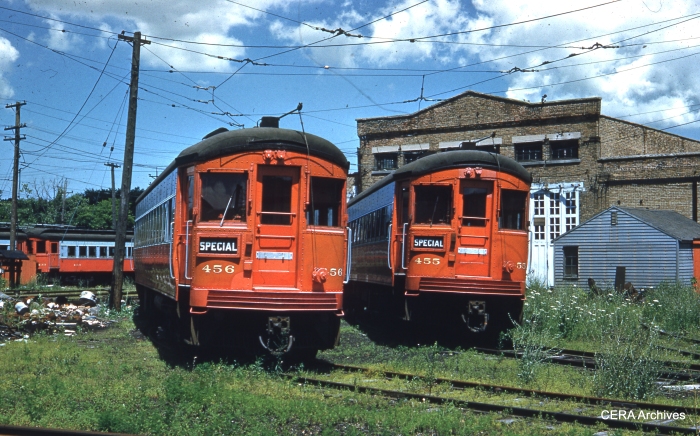
CA&E 456 and 455 among the weeds at Wheaton Shops in August 1959. Even freight service had ended a few months earlier, but these cars look like they have received a fresh coat of paint, in hopes of being sold to another operator. Although the cars were only about 12 years old at this time, six of the ten postwar units ended up being scrapped a few years later right on this spot. The only cars saved from the 451-460 series went to “Trolleyville USA” in Ohio instead of ending up on the North Shore Line or in Airport service in Cleveland.
The late Gerald E. Brookins was responsible for preserving many historic railcars at his “Trolleyville USA” in northern Ohio. He sometimes took a different approach to paint schemes on his “Columbia Park and Southwestern,” with some equipment painted in an odd and rather unpopular yellow and dark green livery. I’m not sure what historic precedence there was supposed to be for it, but now that the Brookins collection has been dispersed to other museums, some of those same cars have been repainted into more authentic colors.
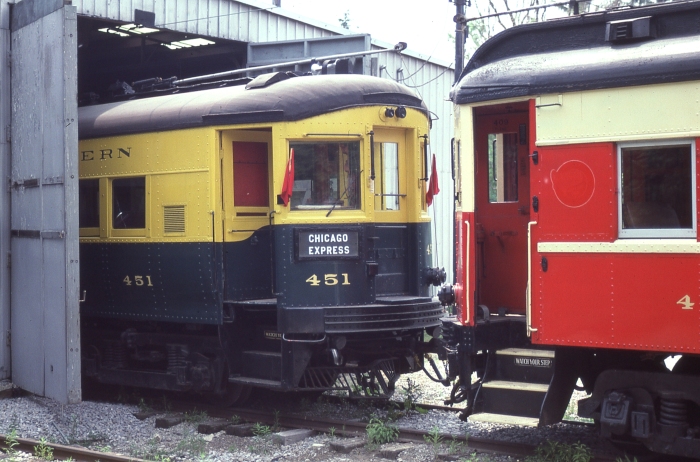
A 1984 shot of CA&E 451 (with a rather odd color scheme) in Olmstead Township, Ohio on the Columbia Park and Southwestern aka “Trolleyville USA.” This car is now at the Illinois Railway Museum. (Photo by David Sadowski)
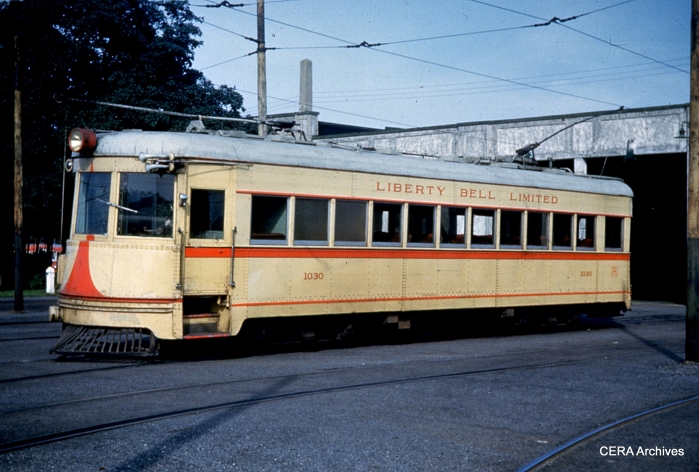
Lehigh Valley Transit car 1030 as it looked at Fairview car barn on September 9, 1951, a few days after interurban service ended. The original paint chips from 1939 still exist for this color array, and hopefully can be used to provide an exact match the next time this car is repainted at the Seashore Trolley Museum.
Model painters can be a great source of information on authentic railcar colors. After all, they have to deal with this issue head-on in many more situations than railway museums do. There are a lot more models than real trains.
Another thing to keep in mind: color is density. Changing the exposure of a photograph also changes the color. The light meters in cameras are calibrated towards a medium gray tone, and will tend to render snow as gray instead of white. The same is true of very dark objects. The typical camera will tend to make them look gray as well.
A camera cannot adjust to light in the same way that your brain does. Your brain acclimates to different colored light, which explains why florescent light looks green in photos, but not to your eye. The same is true of incandescent light, which tends to look very yellow in pictures. The worst situation is when you have mixed lighting from different sources that are not the same color. In that case, adjusting for one throws the rest of the picture off even more.
There was no Pantone color matching system in 1963, when the North Shore Line gave up the ghost. Pantone equates shades of color with a reference number, and thus provides a way of replicating colors without the guesswork. It’s proven to be such a great system that it has even appeared in lyrics to popular songs, such as this excerpt from Reno Dakota by Stephin Merritt The Magnetic Fields:
Reno Dakota there’s not an iota of kindness in you
You know you enthrall me and yet you don’t call me
It’s making me blue, Pantone 292
The Pantone system, however, cannot replace the poetry of the past. Pantone color numbers will never sound as or look as romantic as the combination of Mercury Green, Croydon Cream, and Swamp Holly Orange, the original colors of Chicago’s postwar PCC streetcars and “L” cars.
Why be a number when you can be a Green Hornet?
-David Sadowski
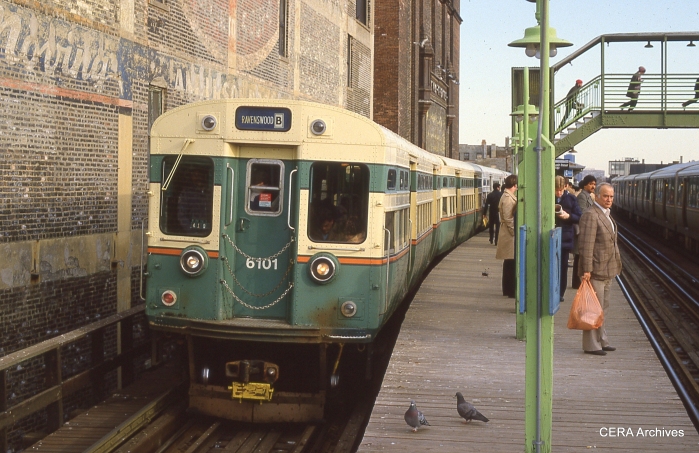
CTA 6101-6102 heading up a Ravenswood B train southbound at Belmont in the mid-1980s. These cars are now at the Fox River Trolley Museum in South Elgin. (Photo by David Sadowski)
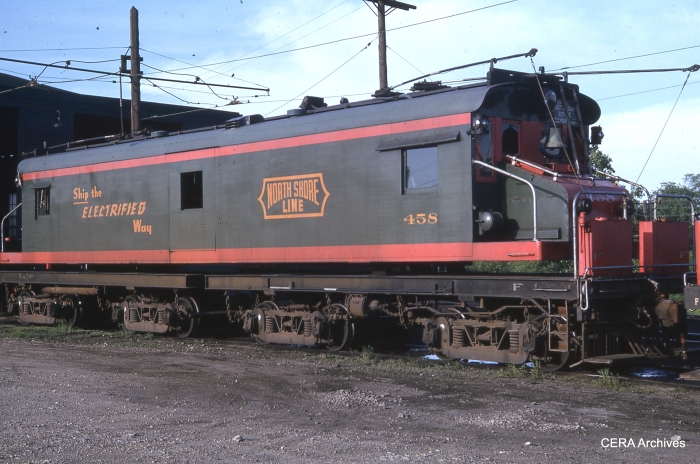
Another view of 458 in North Chicago, this time on May 30, 1962.
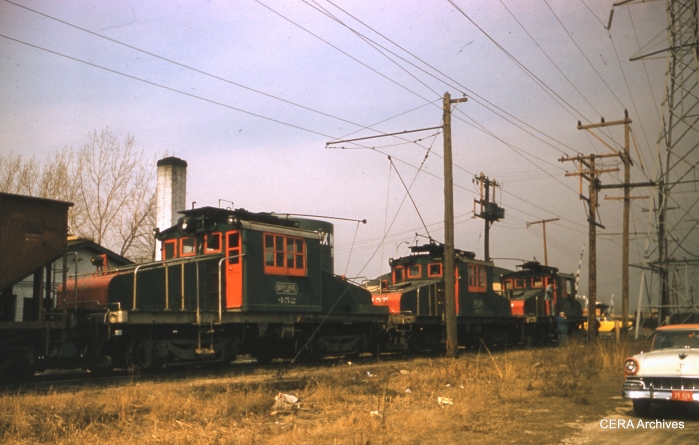
Three North Shore “pups” at work in March 1961, with loco 452 at rear. (Photographer unknown)
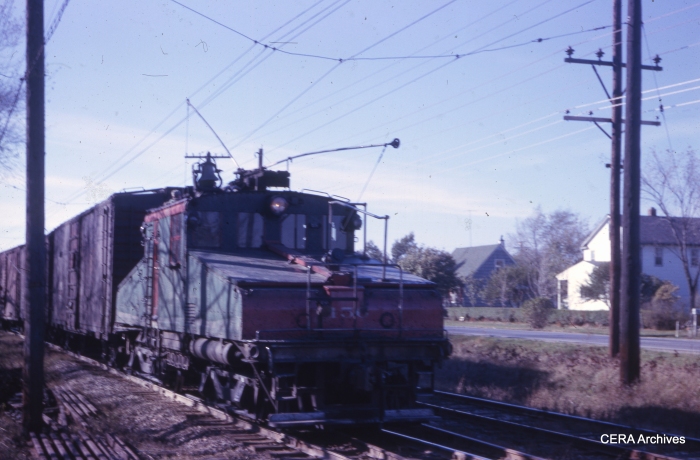
A North Shore Line freight train led by loco 456 at Rondout in November 1962. (Photographer unknown)
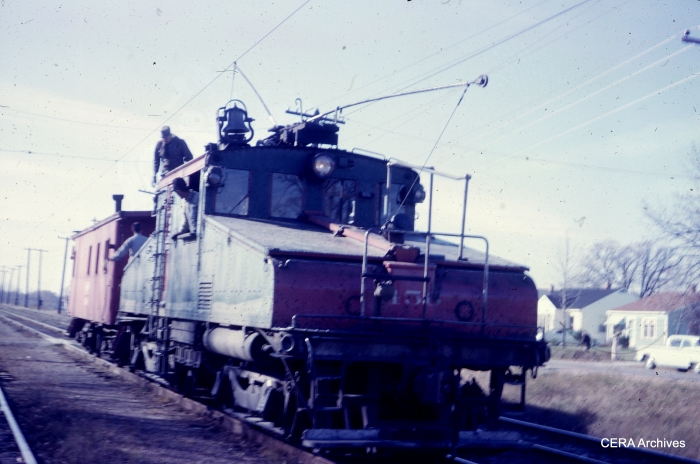
North Shore Line loco 456 and caboose in November 1962. (Photographer unknown)
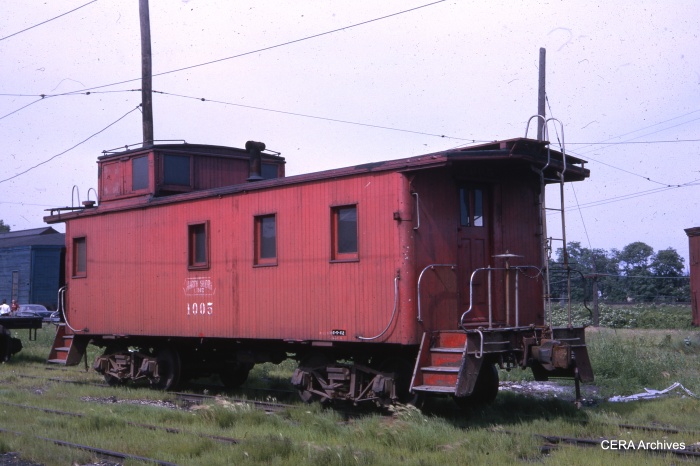
CNS&M caboose 1005 at North Chicago Junction on June 16, 1962. (Photo by W. A. Gibson)
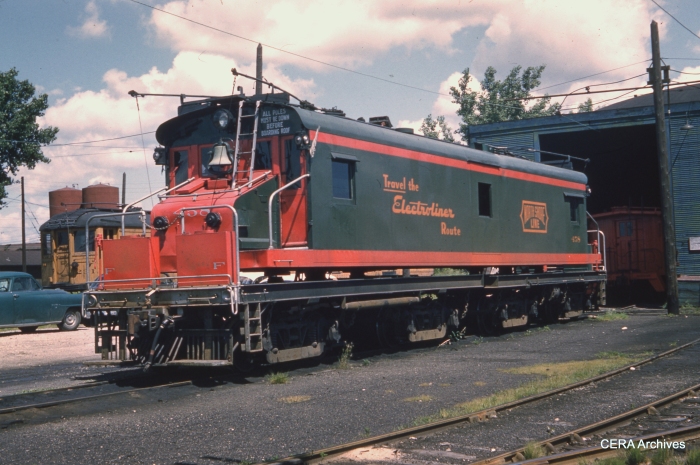
458 at North Chicago in July 1959. (Photo by Spitzer)
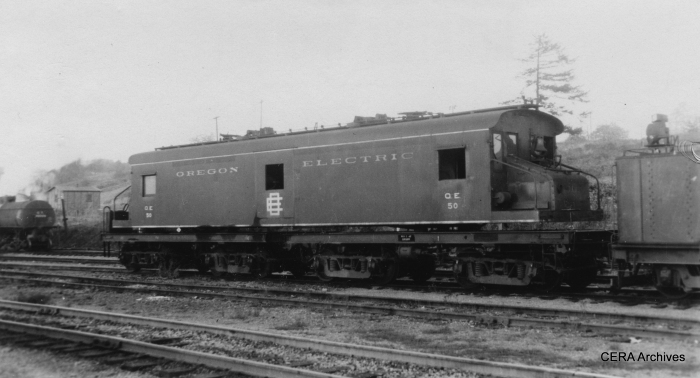
Another view of Oregon Electric 50. (Photographer unknown)

Another view of Oregon Electric 51. (Photographer unknown)